INTERNATIONAL
STANDARD
ISO
11270
First edition
2014-05-15
Intelligent transport systems — Lane
keeping assistance systems (LKAS) —
Performance requirements and test
procedures
Systèmes intelligents de transport — Systèmes d’aide au suivi de voie
— Exigences de performance et modes opératoires d’essai
Reference number
ISO 11270:2014(E)
© ISO 2014
�
ISO 11270:2014(E)
COPYRIGHT PROTECTED DOCUMENT
© ISO 2014
All rights reserved. Unless otherwise specified, no part of this publication may be reproduced or utilized otherwise in any form
or by any means, electronic or mechanical, including photocopying, or posting on the internet or an intranet, without prior
written permission. Permission can be requested from either ISO at the address below or ISO’s member body in the country of
the requester.
ISO copyright office
Case postale 56 • CH-1211 Geneva 20
Tel. + 41 22 749 01 11
Fax + 41 22 749 09 47
E-mail copyright@iso.org
Web www.iso.org
Published in Switzerland
ii
© ISO 2014 – All rights reserved
�
ISO 11270:2014(E)
1
2
3
4
5
Contents
Page
Foreword ........................................................................................................................................................................................................................................iv
Introduction ..................................................................................................................................................................................................................................v
Scope .................................................................................................................................................................................................................................1
Normative references ......................................................................................................................................................................................1
Terms and definitions .....................................................................................................................................................................................1
Symbols and abbreviated terms ...........................................................................................................................................................3
Symbols .........................................................................................................................................................................................................3
4.1
Abbreviated terms ...............................................................................................................................................................................3
4.2
Requirements ..........................................................................................................................................................................................................3
Functionality .............................................................................................................................................................................................3
5.1
5.2
Basic driver interface and intervention capabilities ..............................................................................................4
5.3 Minimum functionality ....................................................................................................................................................................5
5.4
Operational limits .................................................................................................................................................................................5
Failure reactions ....................................................................................................................................................................................5
5.5
Performance evaluation test methods ...........................................................................................................................................6
6.1
Environmental conditions .............................................................................................................................................................6
6.2
Test course conditions ......................................................................................................................................................................6
6.3
Test vehicle conditions .....................................................................................................................................................................6
6.4
Test system installation and configuration ....................................................................................................................6
6.5
Test procedure .........................................................................................................................................................................................7
Annex A (informative) Example for a track for the test procedure in a curve...........................................................9
Annex B (informative) National road markings .....................................................................................................................................11
Bibliography .............................................................................................................................................................................................................................19
6
© ISO 2014 – All rights reserved
iii
�
ISO 11270:2014(E)
Foreword
ISO (the International Organization for Standardization) is a worldwide federation of national standards
bodies (ISO member bodies). The work of preparing International Standards is normally carried out
through ISO technical committees. Each member body interested in a subject for which a technical
committee has been established has the right to be represented on that committee. International
organizations, governmental and non-governmental, in liaison with ISO, also take part in the work.
ISO collaborates closely with the International Electrotechnical Commission (IEC) on all matters of
electrotechnical standardization.
The procedures used to develop this document and those intended for its further maintenance are
described in the ISO/IEC Directives, Part 1. In particular the different approval criteria needed for the
different types of ISO documents should be noted. This document was drafted in accordance with the
editorial rules of the ISO/IEC Directives, Part 2 (see www.iso.org/directives).
Attention is drawn to the possibility that some of the elements of this document may be the subject of
patent rights. ISO shall not be held responsible for identifying any or all such patent rights. Details of
any patent rights identified during the development of the document will be in the Introduction and/or
on the ISO list of patent declarations received (see www.iso.org/patents).
Any trade name used in this document is information given for the convenience of users and does not
constitute an endorsement.
For an explanation on the meaning of ISO specific terms and expressions related to conformity
assessment, as well as information about ISO’s adherence to the WTO principles in the Technical Barriers
to Trade (TBT) see the following URL: Foreword - Supplementary information
The committee responsible for this document is ISO/TC 204, Intelligent transport systems.
iv
© ISO 2014 – All rights reserved
�
ISO 11270:2014(E)
Introduction
The main system function of a Lane Keeping Assistance System (LKAS) is to support the driver in
keeping the vehicle within the current lane. LKAS acquires information on the position of the vehicle
within the lane and, when required, sends commands to actuators to influence the lateral movement of
the vehicle. LKAS provides status information to the driver.
Issues such as specific requirements for the detection sensor function and its performance, or the
communication links for co-operative solutions, will not be considered here.
© ISO 2014 – All rights reserved
v
�
�
INTERNATIONAL STANDARD
ISO 11270:2014(E)
Intelligent transport systems — Lane keeping assistance
systems (LKAS) — Performance requirements and test
procedures
1 Scope
2 Normative references
3 Terms and definitions
This International Standard contains the basic control strategy, minimum functionality requirements,
basic driver interface elements, minimum requirements for diagnostics and reaction to failure, and
performance test procedures for Lane Keeping Assistance Systems (LKAS). LKAS provide support for
safe lane keeping operations by drivers and do not perform automatic driving nor prevent possible lane
departures. The responsibility for the safe operation of the vehicle always remains with the driver. LKAS
is intended to operate on highways and equivalent roads. LKAS consist of means for recognizing the
location of the vehicle inside its lane and means for influencing lateral vehicle movement. LKAS should
react consistently with the driver expectations with respect to the visible lane markings. The support at
roadway sections having temporary or irregular lane markings (such as roadwork zones) is not within
the scope of this International Standard. This International Standard is applicable to passenger cars,
commercial vehicles, and buses.
The following documents, in whole or in part, are normatively referenced in this document and are
indispensable for its application. For dated references, only the edition cited applies. For undated
references, the latest edition of the referenced document (including any amendments) applies.
ISO 2575, Road vehicles — Symbols for controls, indicators and tell-tales
For the purposes of this document, the following terms and definitions apply.
vehicle equipped with LKAS as defined herein
one of several stages or phases of system operation (see Figure 1)
system is switched off
system is switched on
system is switched on but the activation criteria are not all met
system is switched on and the activation criteria are met
© ISO 2014 – All rights reserved
3.2.3
LKAS stand-by state
3.2.4
LKAS active state
3.1
subject vehicle
3.2
system states
3.2.1
LKAS off state
3.2.2
LKAS on state
1
�
ISO 11270:2014(E)
3.3
3.6
lane boundary
3.4
visible lane marking
3.7
time to line crossing
TTLC
3.5
incidental visible road feature
lanearea of roadway that a vehicle would be expected to travel along in the absence of any obstruction
without the driver’s desire to change the path of travel
delineators intentionally placed on the borderline of the lane that are directly visible to the driver while
driving (e.g. not covered by snow, etc.)
visible patterns on the road surface that were not explicitly intended to delineate the boundaries of the
lane, but which are indicative of the position of the lane
Note 1 to entry: These can include such features as pavement seams or edges and curbs.
borderline of the lane that is determined by a visible lane marking; and in the absence of a visible lane
marking, by incidental visible road features or other means such as GPS, magnetic nails, etc
Note 1 to entry: In the case of a visible lane marking, the boundary is at the center thereof.
calculated time to lane departure
Note 1 to entry: For example, the most simple calculation method of this time (TTLC) is to divide lateral distance
(D) between the predetermined part of the vehicle and the lane boundary by rate of departure (V_depart) of the
vehicle relative to the lane. (TTLC = D/V_depart)
driver request or a system feature intended to prevent an LKAS action if an intentional lane departure
is detected
actions which the system performs to influence the lateral movement of the subject vehicle with the
intention of helping the driver to keep the vehicle within the lane
component of subject vehicle’s approach velocity at a right angle to the lane boundary
distance at which the illuminance of a non-diffusive beam of white light with a colour temperature of
2 700 K is decreased to 5 % of its original light source illuminance
system that drives the vehicle without the driver being in the vehicle control loop, e.g. without a hand on
the steering wheel or feet on the pedals
3.10
rate of departure
V_depart
3.11
visibility
3.12
automatic driving
3.8
suppression request
3.9
lane keeping actions
2
© ISO 2014 – All rights reserved
�
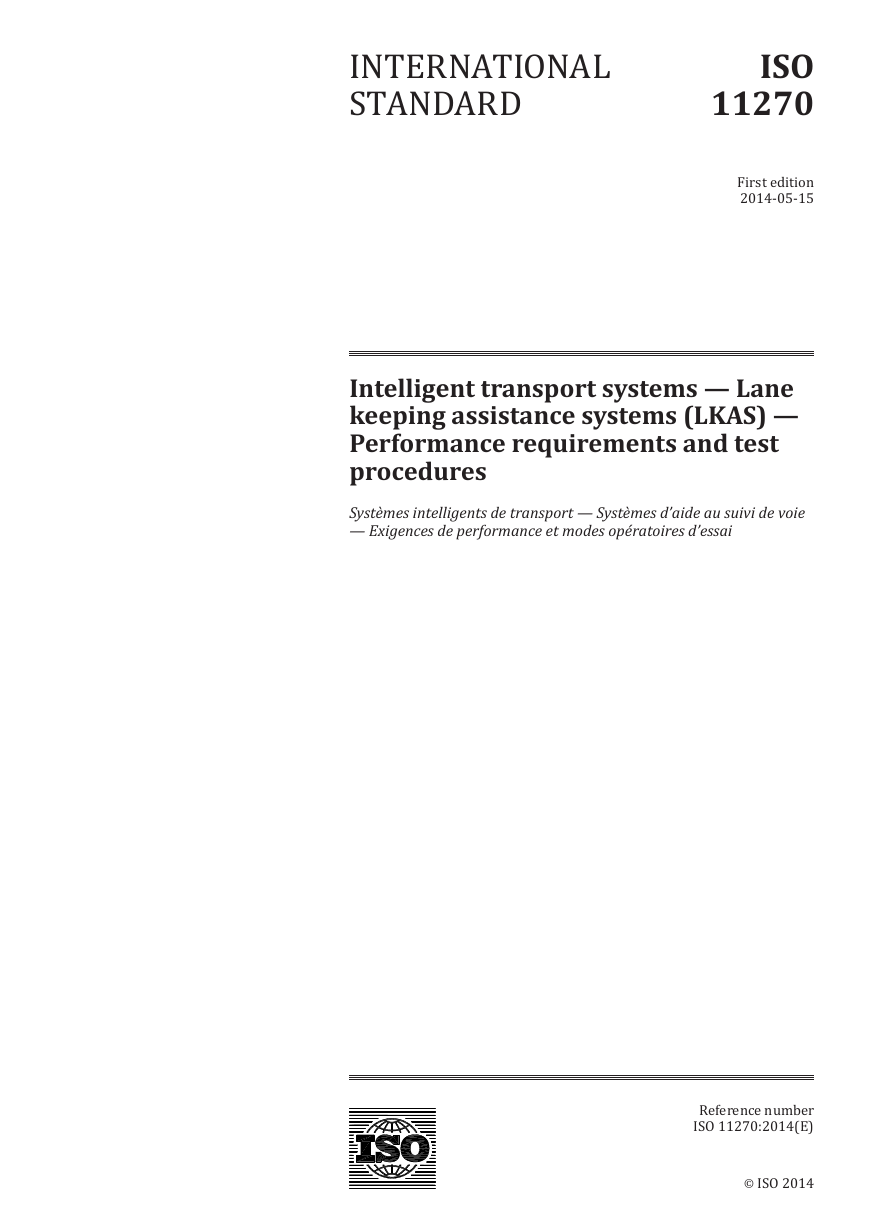
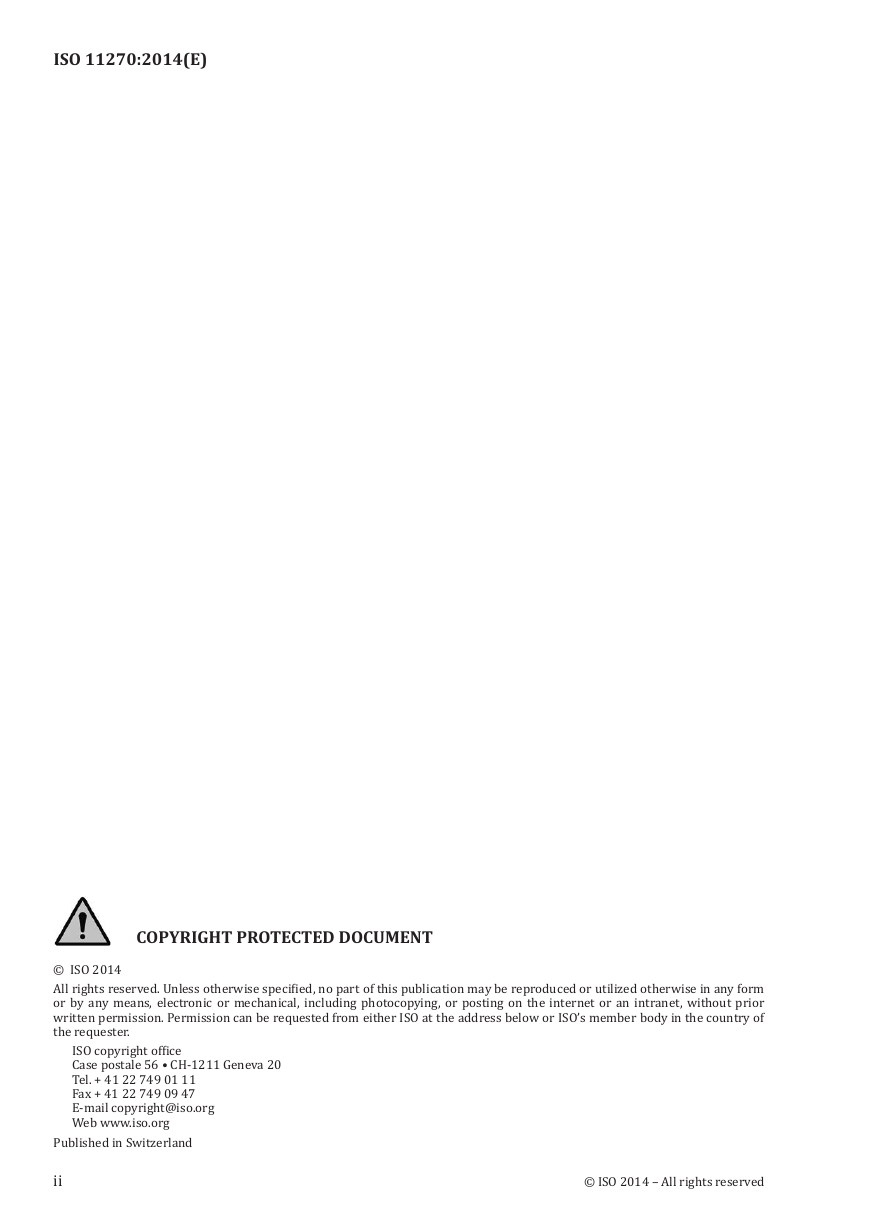

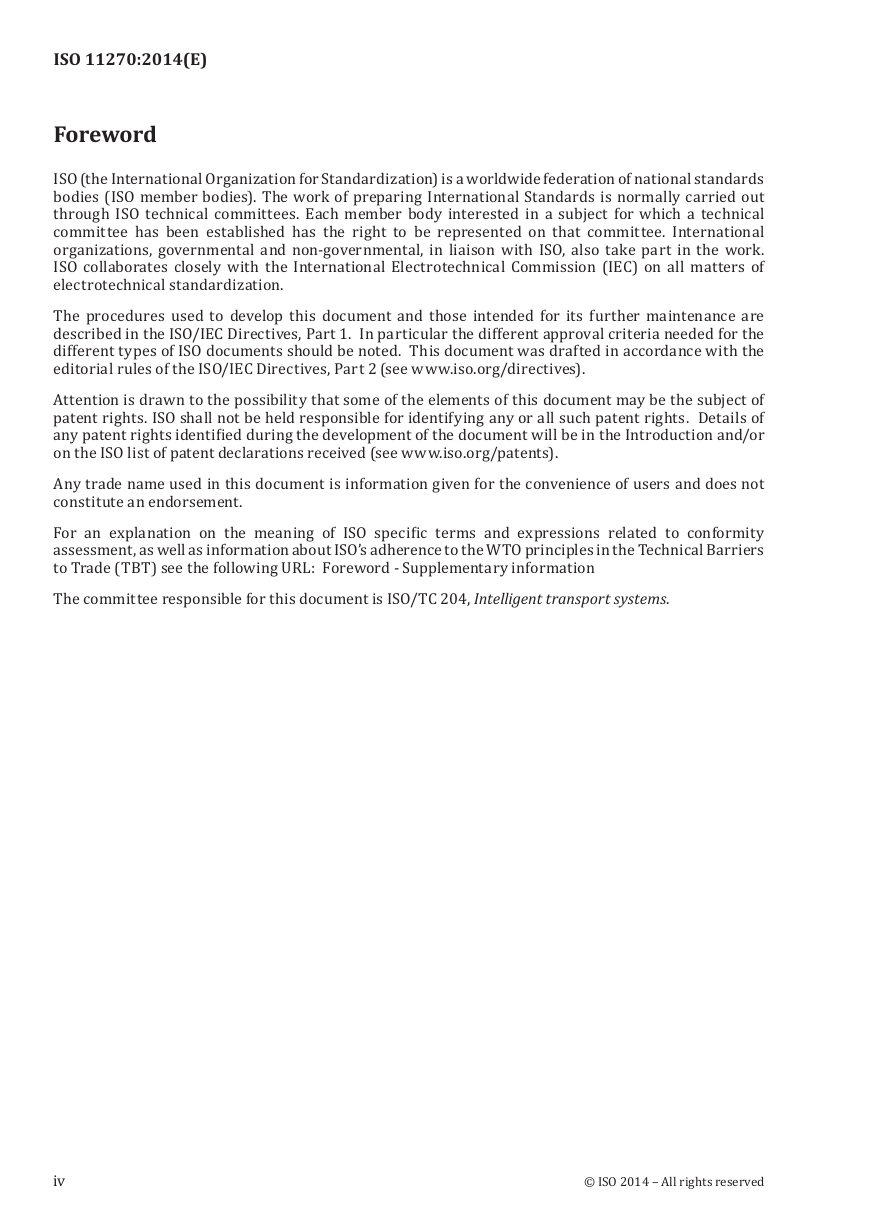
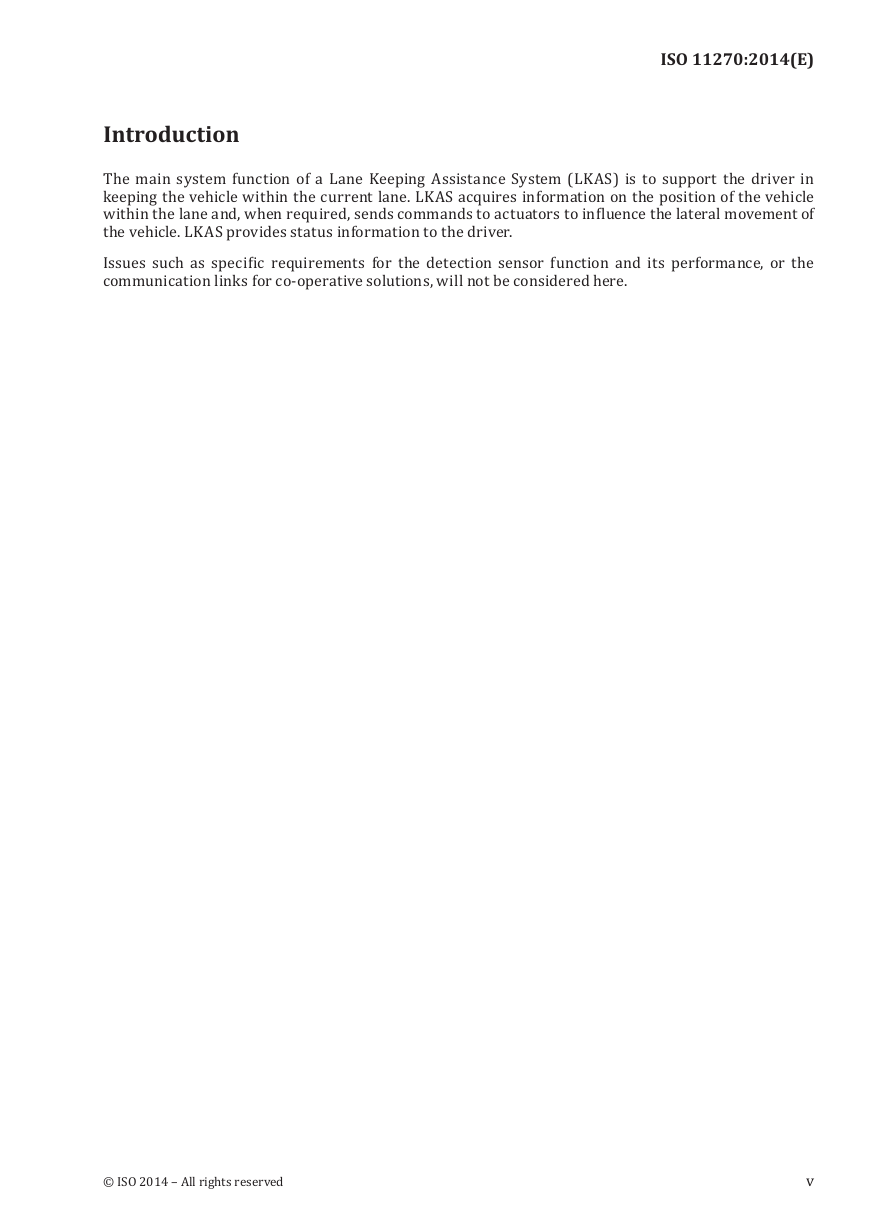

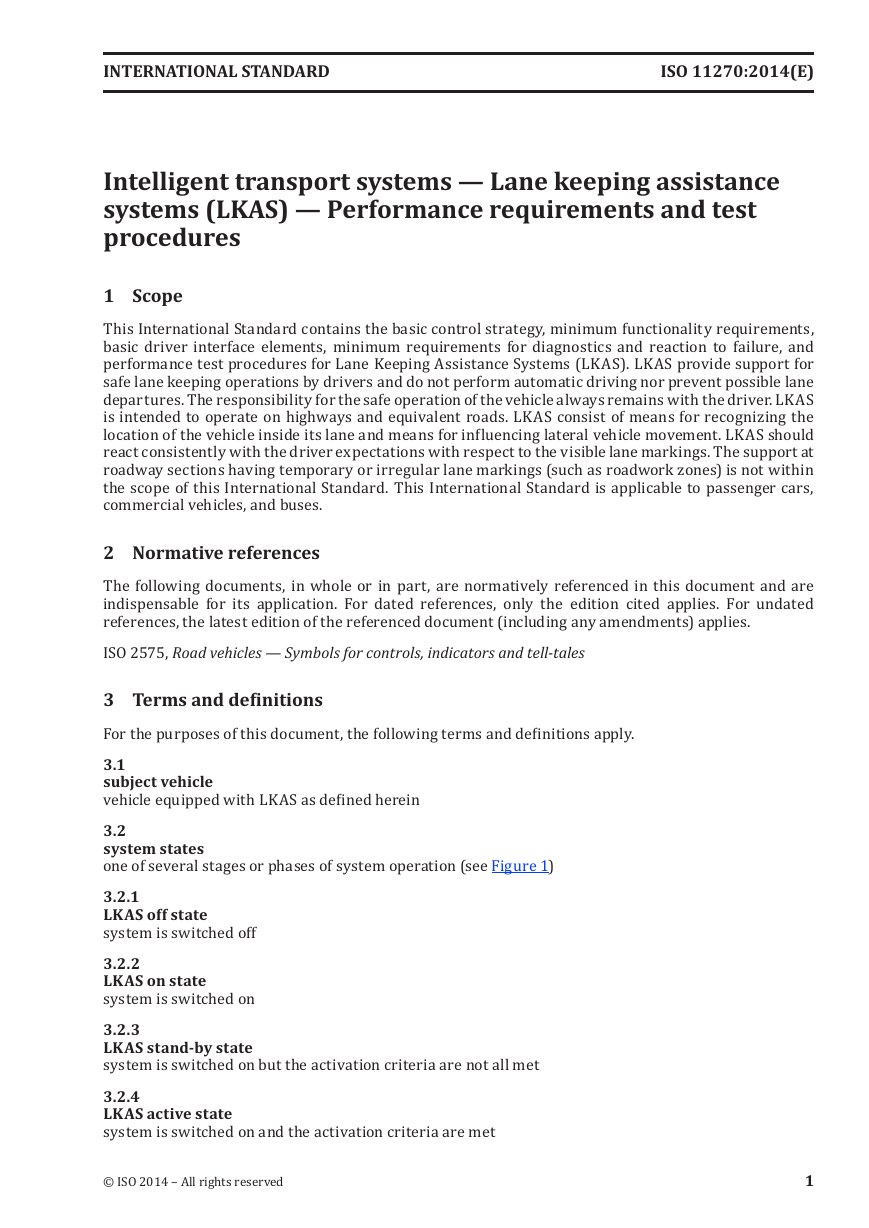
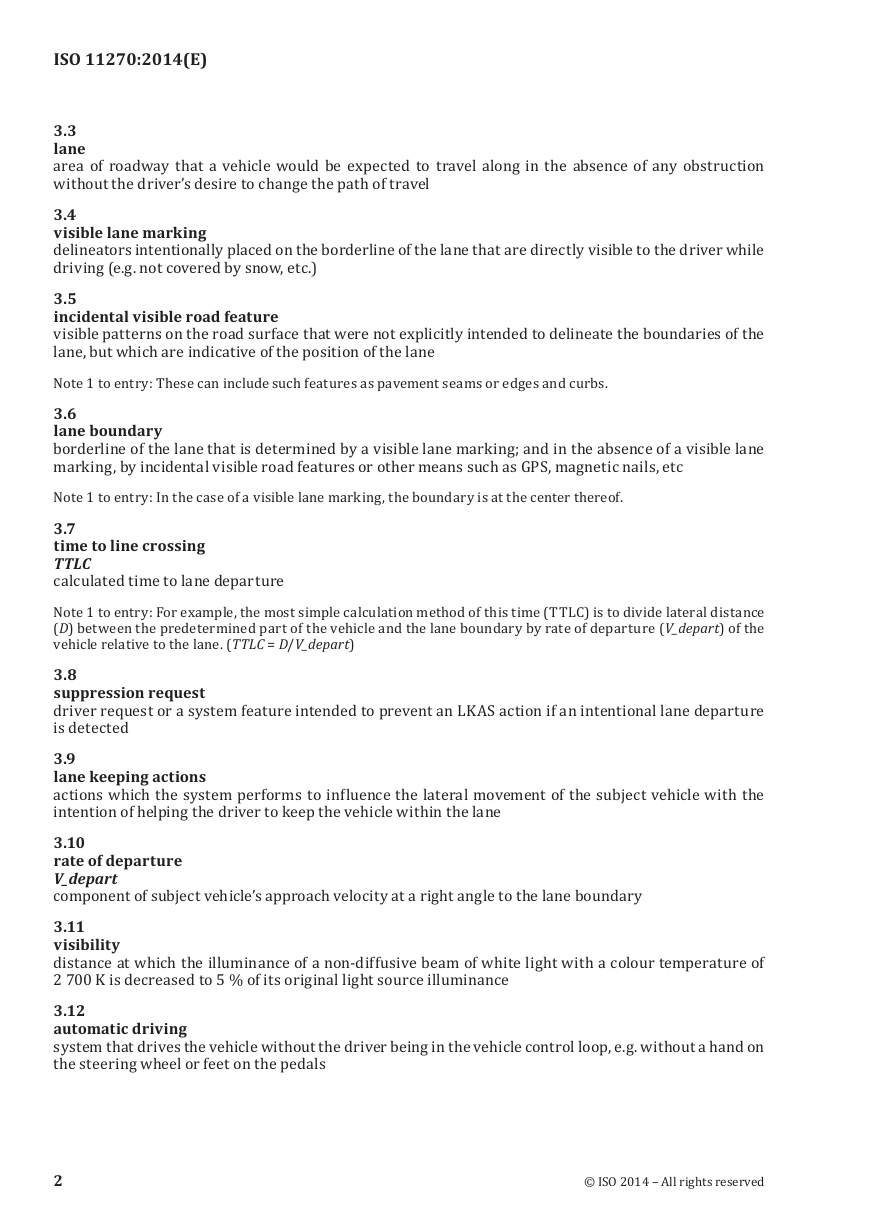








 2023年江西萍乡中考道德与法治真题及答案.doc
2023年江西萍乡中考道德与法治真题及答案.doc 2012年重庆南川中考生物真题及答案.doc
2012年重庆南川中考生物真题及答案.doc 2013年江西师范大学地理学综合及文艺理论基础考研真题.doc
2013年江西师范大学地理学综合及文艺理论基础考研真题.doc 2020年四川甘孜小升初语文真题及答案I卷.doc
2020年四川甘孜小升初语文真题及答案I卷.doc 2020年注册岩土工程师专业基础考试真题及答案.doc
2020年注册岩土工程师专业基础考试真题及答案.doc 2023-2024学年福建省厦门市九年级上学期数学月考试题及答案.doc
2023-2024学年福建省厦门市九年级上学期数学月考试题及答案.doc 2021-2022学年辽宁省沈阳市大东区九年级上学期语文期末试题及答案.doc
2021-2022学年辽宁省沈阳市大东区九年级上学期语文期末试题及答案.doc 2022-2023学年北京东城区初三第一学期物理期末试卷及答案.doc
2022-2023学年北京东城区初三第一学期物理期末试卷及答案.doc 2018上半年江西教师资格初中地理学科知识与教学能力真题及答案.doc
2018上半年江西教师资格初中地理学科知识与教学能力真题及答案.doc 2012年河北国家公务员申论考试真题及答案-省级.doc
2012年河北国家公务员申论考试真题及答案-省级.doc 2020-2021学年江苏省扬州市江都区邵樊片九年级上学期数学第一次质量检测试题及答案.doc
2020-2021学年江苏省扬州市江都区邵樊片九年级上学期数学第一次质量检测试题及答案.doc 2022下半年黑龙江教师资格证中学综合素质真题及答案.doc
2022下半年黑龙江教师资格证中学综合素质真题及答案.doc